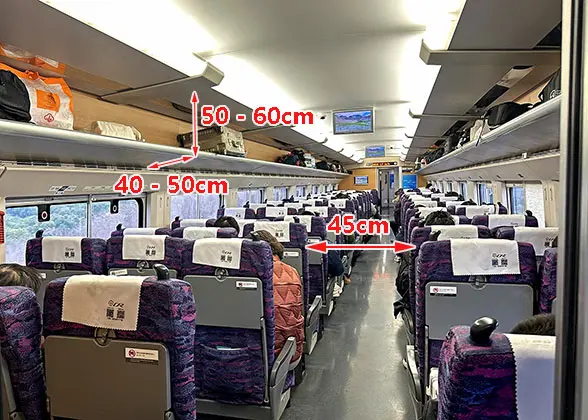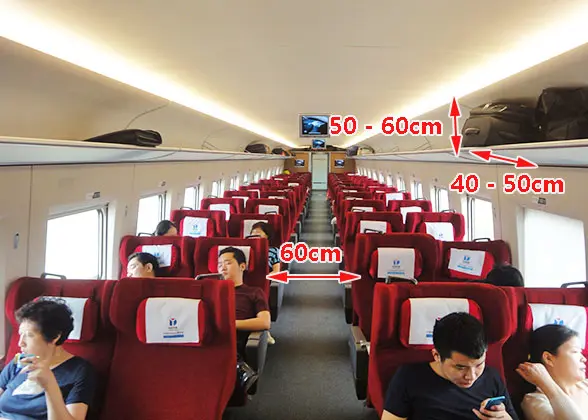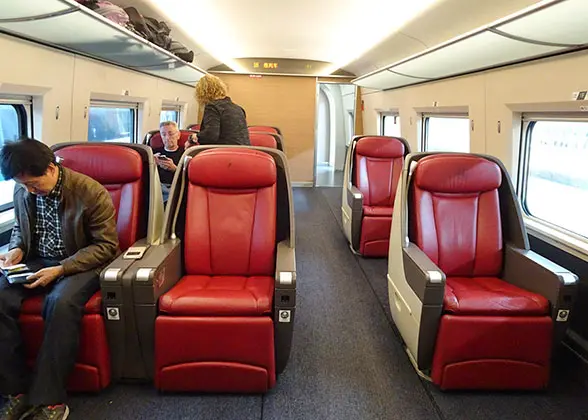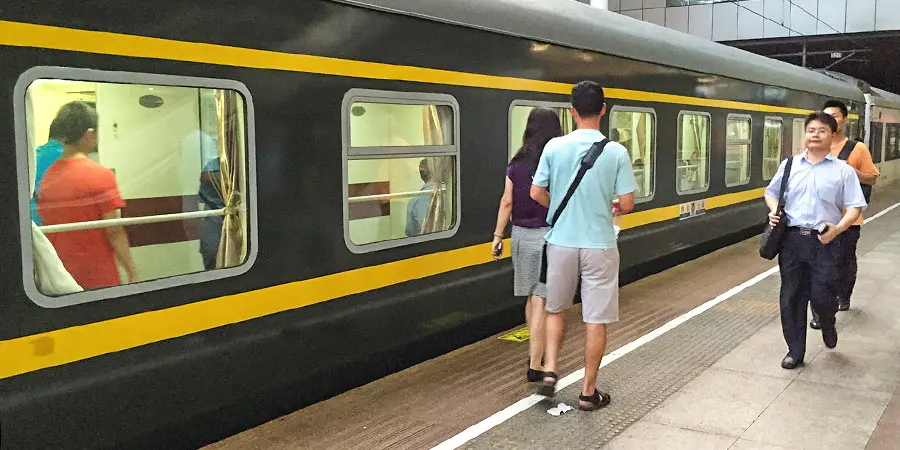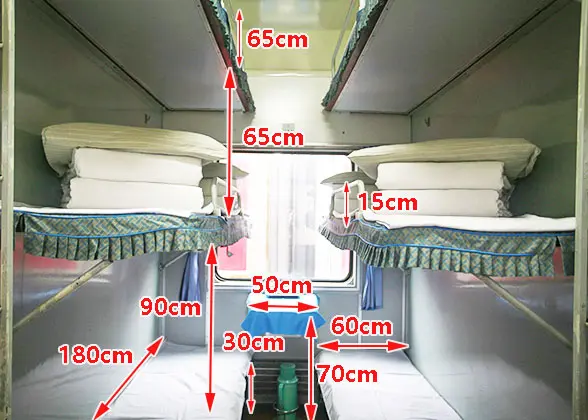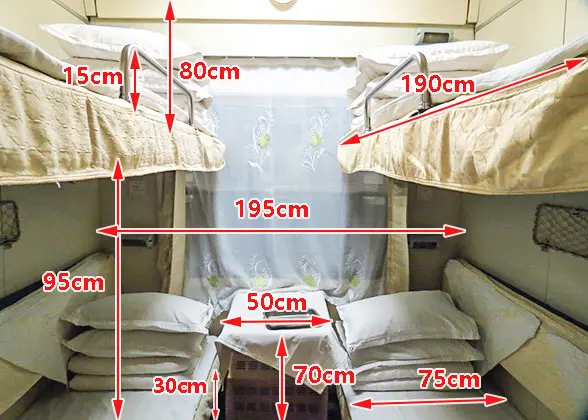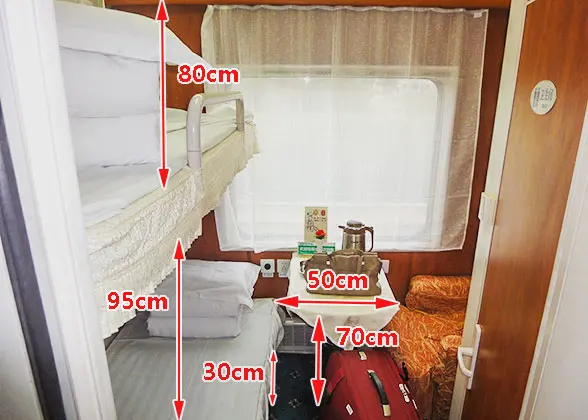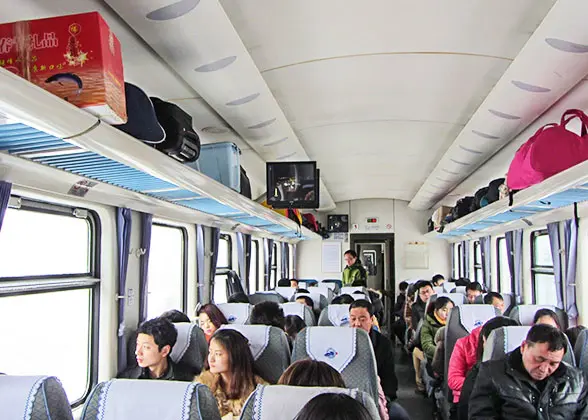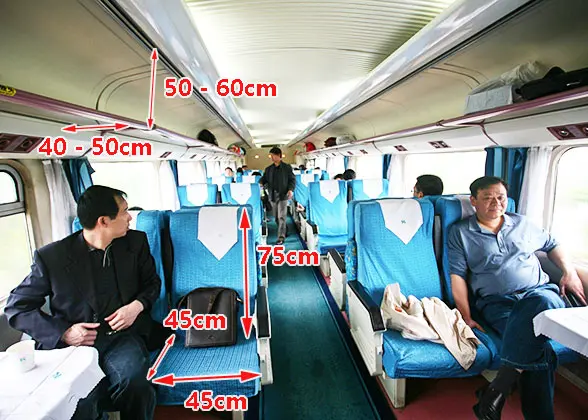China train ticket types can be classified into:
On bullet/ high speed trains (C, D, G trains): first class seat, second class seat, business class seat, VIP seat, premium first class seat, soft sleeper and deluxe soft sleeper or first class sleeper and second class sleeper, new type sleepers;
On non-bullet trains (Z, T, K, Y, K, S types): hard sleeper, soft sleeper, deluxe soft sleeper, hard seat, soft seat.
First class seats and second class seats on China trains are the first choice for a trip less than five hours, while sleepers are highly recommended for a long or overnight journey.
Seat Classes on Bullet Train
Identified by the letters G/D/C plus several digits and usually in white or grey with bullet-like locomotives, the high speed types are fast, clean, well-equipped like an airplane and run more smoothly. They are the first choice of most passengers. But a few of them run overnight.
Second class seats have five seats in a row, three on one side of the aisle and two on the other side. The seats are like those in economy class on an airplane. The backrest can be adjusted to a comfortable angle and has a small, foldable table attached. The seats can be rotated so all passengers can sit facing forward. The seats in other classes also have this feature. Second Class ticket price is the lowest among all high speed classes, so it is the most popular and most frequently used.
| | 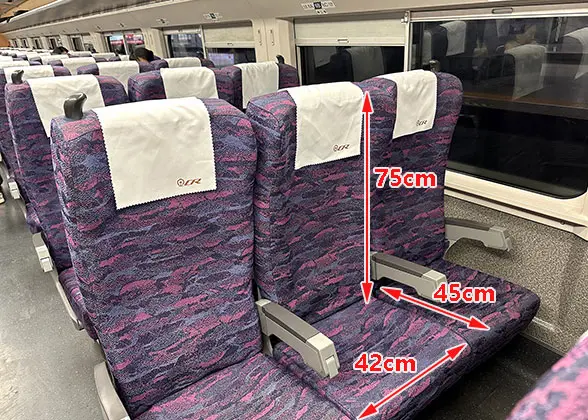 | | Measurement of Second Class Seat | |
First class seats on C, D or G trains have four seats in a row, two on each side of the aisle. They are wider and softer than in second class. With a small pillow and a foldable footrest, they offer a more comfortable experience. The ticket fare is about 20% to 40% higher than second class.
First Class vs. Second Class
| | 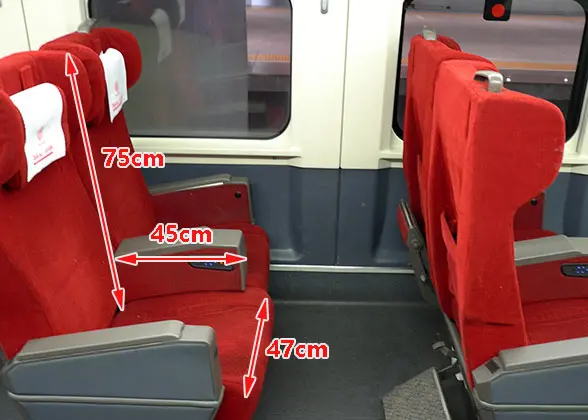 | | Measurement of First Class Seat | |
C, D or G train business class seats are the equivalent of first class on an airplane and are only available on G and some D types. There are two sofa-like seats on one side and one on the other side. The seats can be adjusted flat for passengers to lie down. The fare is the highest- about twice that of first class.
| | 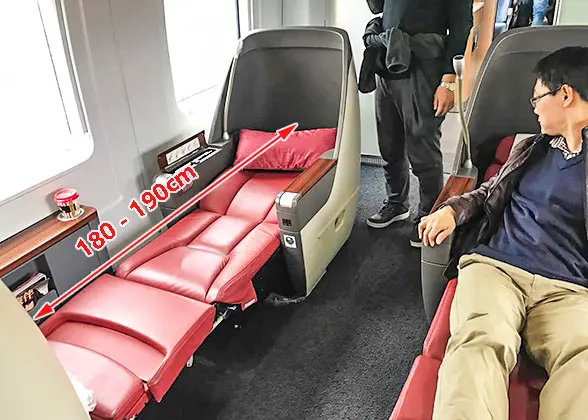 | | Measurement of Business Class Seat | |
4
VIP Seat
They are available on G and certain D types. They are as comfortable as those in the first class carriages, with two on one side and one on the other. The fare is higher than the first class and about twice of the second class.
5
Premium First Class Seat
They have similar layouts of first class seats but boast more comfortable backs. Therefore, their price is often higher than the first class ones but lower than the business class. At present, they are only available on a few new type Fuxing trains running between Beijing and Shanghai.
They can usually be seen on some long-distance G or D trains running overnight. Five kinds are available:
| Sleeper Types | Layout | Available on | Suitable for |
| Soft Sleepers | 4 berths in each cabin | Hexiehao or CRH Trains, top speed 300km/h (186mph) | Families |
| Deluxe Soft Sleepers | 2 berths in each cabin | Couples |
| First Class Sleepers | 4 berths in each cabin | Fuxinghao or CR Trains, top speed 350km/h (217mph) | Families |
| Second Class Sleepers | 6 berths in each cabin | Travelers with a limited budget |
| New Type Sleepers | berths arranged lengthwise along the aisle | Beijing - Shenzhen D902/ D901 Trains | Solo travelers |
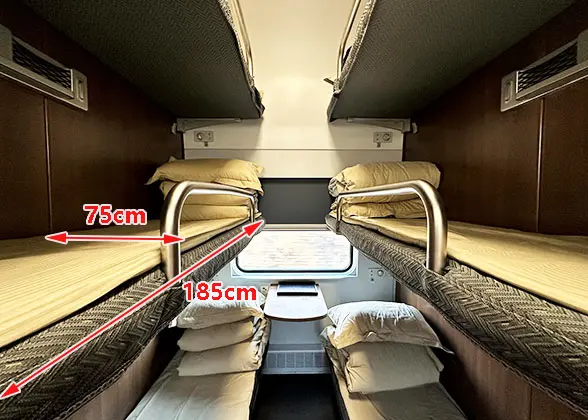 | | Measurement of Second Class Sleeper | | 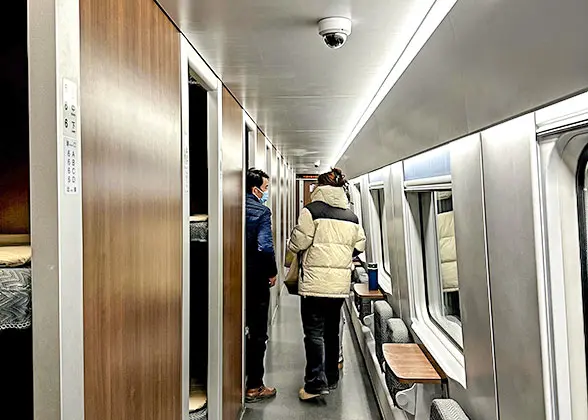 | | Sleeper Carriage of High Speed Trains | |
This is a kind of prepaid card used for taking intercity high speed trains between Beijing – Tianjin, Guangzhou – Zhuhai, Shanghai – Nanjing, Chengdu – Chongqing, Fuzhou – Xiamen and more. There are two kinds of physical cards, golden pass for taking first class seat and silver pass for second class seat; while with electronic cards, only second class seats are available but discounts are often offered. The cards are more recommended for passengers living in China for a long time and traveling by high speed trains often.
Seat Classes on Normal Train
A hard sleeper compartment usually comprises six berths arranged in three levels on the two sides. As the compartments lack doors, it may be hard to have a good sleep due to continuous snores, kids’ crying, and the sound of the train moving. The fare is about twice as much as a hard seat.
| | 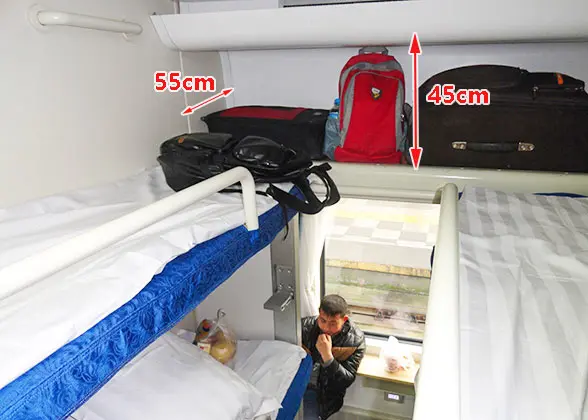 | | Luggage Space of Hard Sleeper Carriage | |
Like those on the high speed D type, a soft sleeper compartment consists of two upper and two lower berths. The berths are wider than the hard sleepers. More importantly, each compartment has a door. The fare is about 50% higher than the hard sleeper.
Soft Sleeper vs. Hard Sleeper
| | 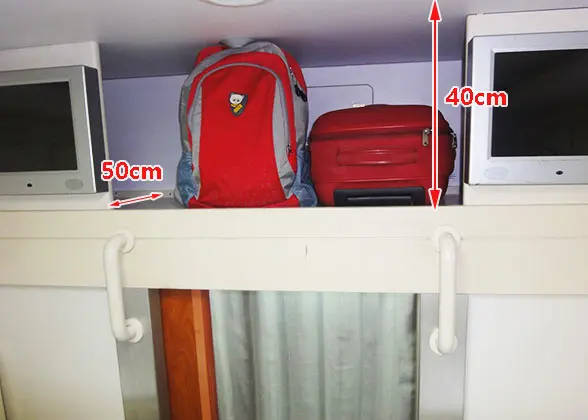 | | Luggage Space of Soft Sleeper Carriage | |
There are two bunks on one side of the compartment, and a leisure area with a sofa and an independent western style toilet. The fare is about twice that of a soft sleeper. They are only available on some long-distance trips between major cities. Some overnight high speed trains also have deluxe soft sleepers.
| | 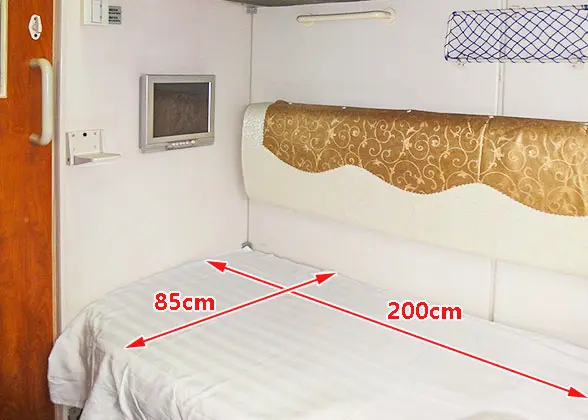 | | Measurement of Deluxe Soft Sleeper | |
Hard seat is the cheapest among all classes. As the name implies, it can be something of an ordeal, especially for a long journey. Not only are the seats hard, the seat backs are almost vertical and cannot be adjusted. The carriages may be a little noisy, smelly, and sometimes crowded with non-seat passengers, especially during peak seasons. There are five seats in a row, two on one side and three on the other side. A small table is set between every two opposite rows.
| | 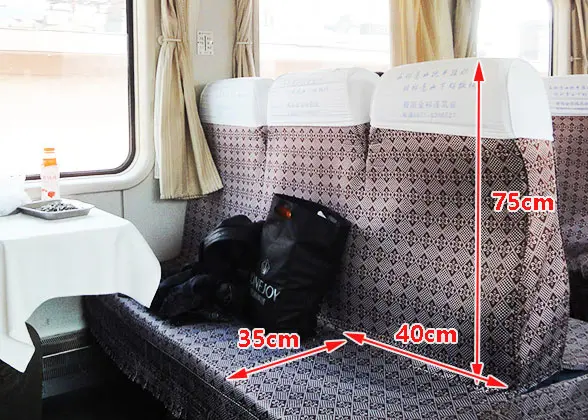 | | Measurement of Hard Seat | |
Soft seats are only available on a few trains. There are four seats in a row with two on both sides. The seats are cushioned and softer. The fare is about 1.5 times of a hard seat.
| | 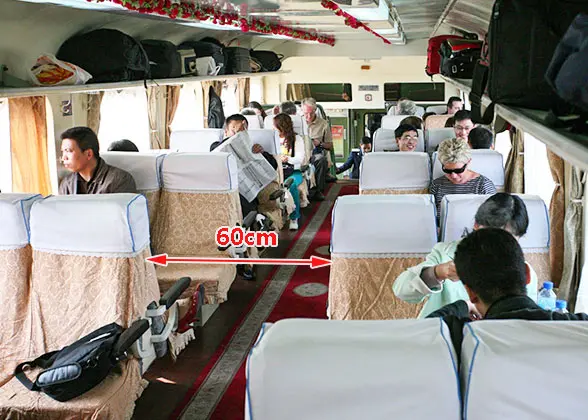 | | Measurement of Soft Seat | |
Special Ticket Types
Standing Room Tickets
Standing room tickets are issued only after all the above tickets are sold out. Passengers holding these tickets are only allowed in the hard seat carriages of normal trains or second class seat carriages on bullet trains and have to stand along the aisle or at the end of a carriage. The fare is the same as that of the above two seat classes.
Child Tickets
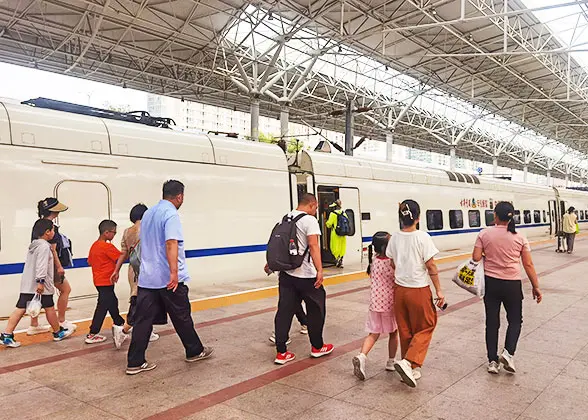 |
| Children need to travel with adults |
 1. Children aged 6 to 14 require child tickets, while those over 14 years old must purchase full-price tickets. Child under 6 years old and accompanied by an adult can travel for free if he or she does not occupy a seat; if a seat is need, he or she needs to pay for a child ticket.
1. Children aged 6 to 14 require child tickets, while those over 14 years old must purchase full-price tickets. Child under 6 years old and accompanied by an adult can travel for free if he or she does not occupy a seat; if a seat is need, he or she needs to pay for a child ticket.
 Note:
Note:
(1) One adult can only take one child under 6 years old onboard for free. If there are two or more children under 6 years old, only one child enjoys a free ride and the others have to buy child tickets.
(2) The age of the child is calculated based on the travel date.
(3) Child tickets can only be booked with children’s own ID certificates like passports.
 2. Passengers with free rides for children should declare to the railroad company in advance. The travel credentials while getting on board will be the identity credentials used when buying the ticket.
2. Passengers with free rides for children should declare to the railroad company in advance. The travel credentials while getting on board will be the identity credentials used when buying the ticket.
 3. The travel date, train no. and seats of child tickets should be the same as the adult tickets, and the arrival station shall not be farther than that of the adult tickets.
3. The travel date, train no. and seats of child tickets should be the same as the adult tickets, and the arrival station shall not be farther than that of the adult tickets.
 4. Children under the age of 14 are generally not allowed to travel alone.
4. Children under the age of 14 are generally not allowed to travel alone.
Student Tickets
These are only for Chinese college students. Foreign students cannot buy them.
Platform Tickets
Platform tickets were sold to people seeing off or picking up friends and relatives from platform rather than the station exit, costing CNY 1 - 2. However, to reduce congestion and ensure safety, all railway stations have stopped selling platform tickets since January 2023.
People seeing off friends could apply for a voucher at the inquiry window at the ticket office by which they can get to the platform; those in need, such as people in wheelchairs and pregnant women are advised to book special service before going to the station that they would be entitled to special passage for check-in, wait in special area or room for boarding, and get on board with the help of dedicated staff.
 Note: The above introductions do not apply to international trains from/ to China.
Note: The above introductions do not apply to international trains from/ to China.
China Train Types
| Type | Top Speed | Description |
| High Speed Type |
| G | 350 km/h (217 mph) | Fastest of all;
Run long distances between large cities; |
| D | 250 km/h (155 mph) | Run for long / middle distances;
A few run overnight. |
| C | 200 km/h (124 mph ) | Run for short distances between two nearby cities. |
| Normal Type |
| Z - Direct Express | 160 km/h (99 mph) | Run directly to destinations none stop or with a few stops at large stations. |
| T - Express | 140 km/h (87 mph) | Limited stops at large stations. |
| K - Fast | 120 km/h (75 mph) | More stops at middle and large stations. |
| Ordinary Fast | 120 km/h (75 mph) | Identified with four digits starting with 1, 2, 4 or 5;
Stop frequently along the way. |
| Ordinary | 100 km/h (62 mph) | Indentified with four digits beginning with 6, 7, 8 or 9;
Stop at almost every station along the way. |
| L - Temporary | 100 km/h (62 mph) | Operate only during the peak travel time, such as Chinese New Year and National Holiday;
Great possibility of delays. |
| Y - Tourism | 100 km/h (62 mph) | Usually run during peak travel seasons;
Destinations are popular tourism cities. |
| S - Suburban | 100 km/h (62 mph) | Used for commuting between the city center and the suburban area in some cities. |
| Steam Train | 20 km/h (12.4 mph) | Powered by steam engine;
Available only in mountainous area of Jiayang Mining Region in Leshan, Sichuan. |

Further Reading:
China Train Travel - A Beginner’s Guide
How to Buy Train Tickets
How to Buy Tickets Online
Useful Chinese Phrases for Train Travel
- Last updated on Aug. 08, 2025 by Grace Yang -
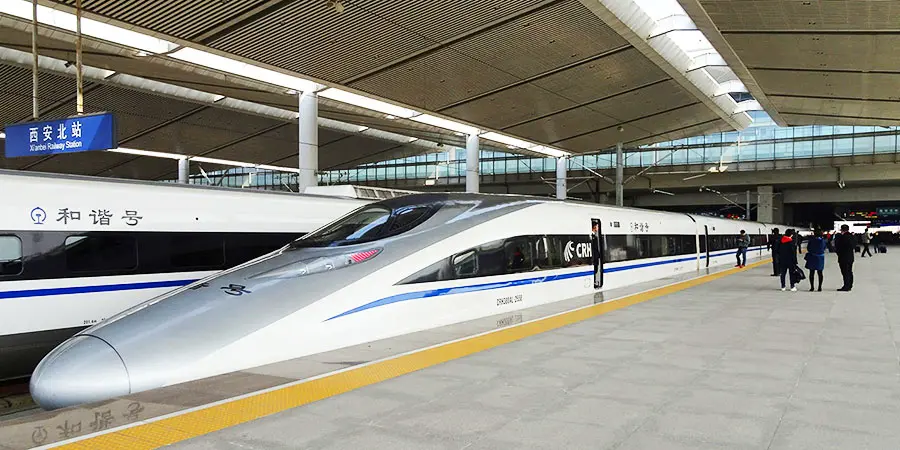
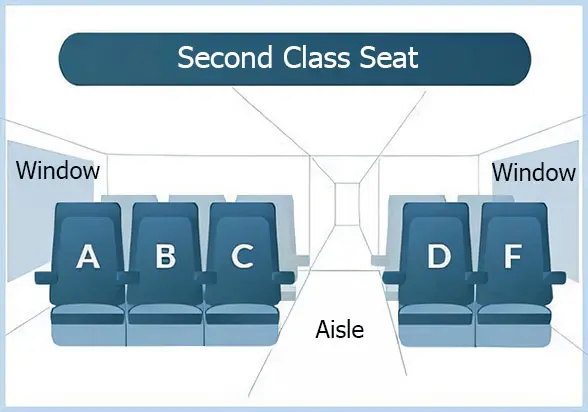
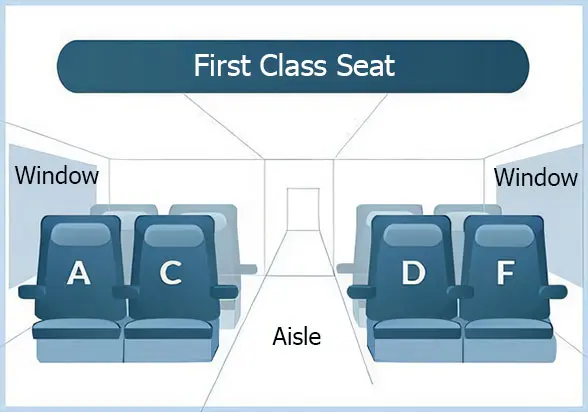
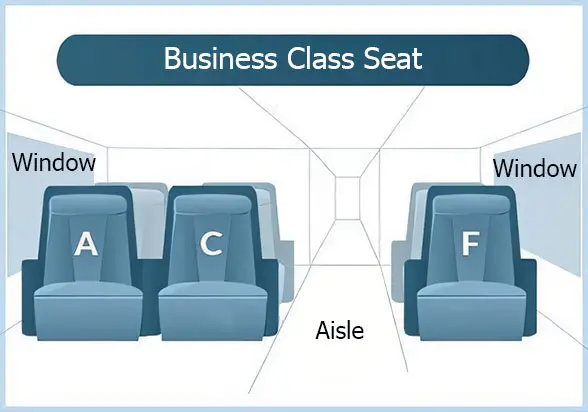
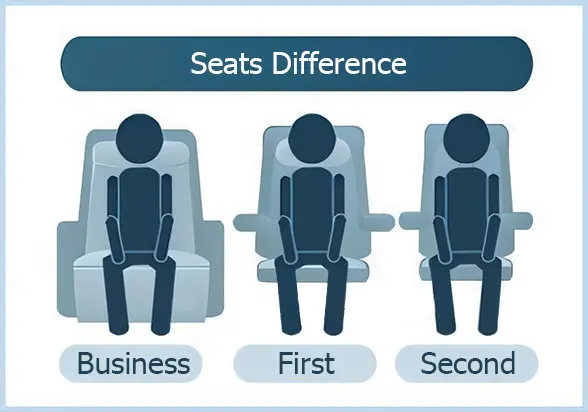

![]() 1. Children aged 6 to 14 require child tickets, while those over 14 years old must purchase full-price tickets. Child under 6 years old and accompanied by an adult can travel for free if he or she does not occupy a seat; if a seat is need, he or she needs to pay for a child ticket.
1. Children aged 6 to 14 require child tickets, while those over 14 years old must purchase full-price tickets. Child under 6 years old and accompanied by an adult can travel for free if he or she does not occupy a seat; if a seat is need, he or she needs to pay for a child ticket. ![]() Note:
Note:![]() 2. Passengers with free rides for children should declare to the railroad company in advance. The travel credentials while getting on board will be the identity credentials used when buying the ticket.
2. Passengers with free rides for children should declare to the railroad company in advance. The travel credentials while getting on board will be the identity credentials used when buying the ticket.![]() 3. The travel date, train no. and seats of child tickets should be the same as the adult tickets, and the arrival station shall not be farther than that of the adult tickets.
3. The travel date, train no. and seats of child tickets should be the same as the adult tickets, and the arrival station shall not be farther than that of the adult tickets.![]() 4. Children under the age of 14 are generally not allowed to travel alone.
4. Children under the age of 14 are generally not allowed to travel alone.![]() Note: The above introductions do not apply to international trains from/ to China.
Note: The above introductions do not apply to international trains from/ to China.